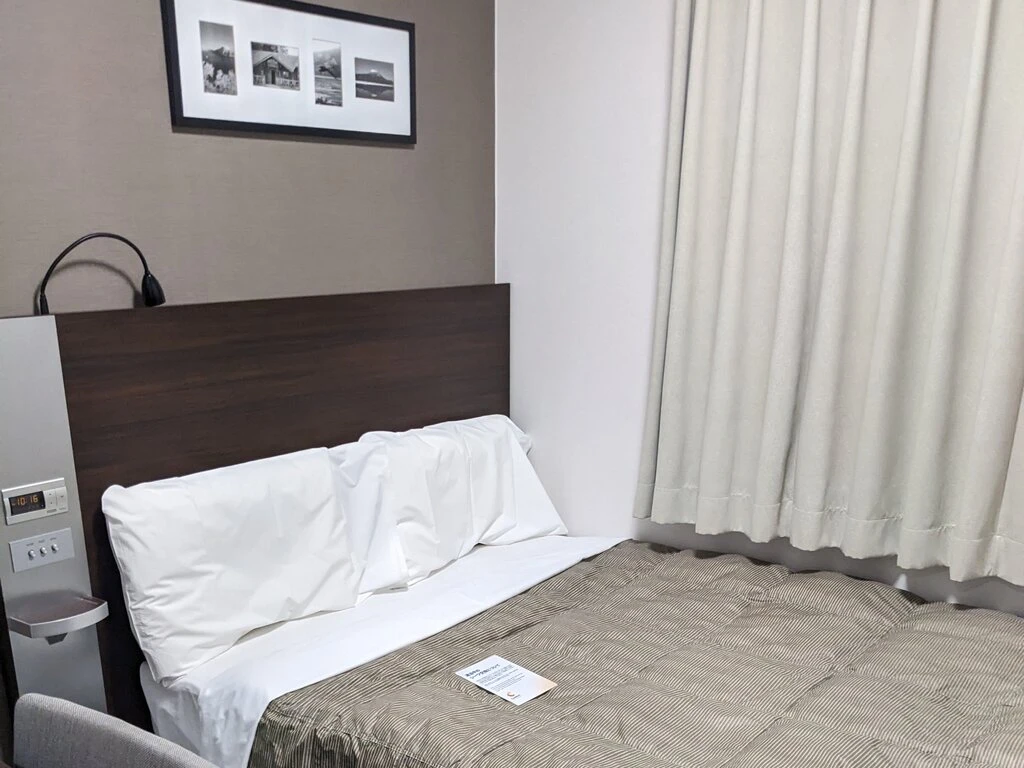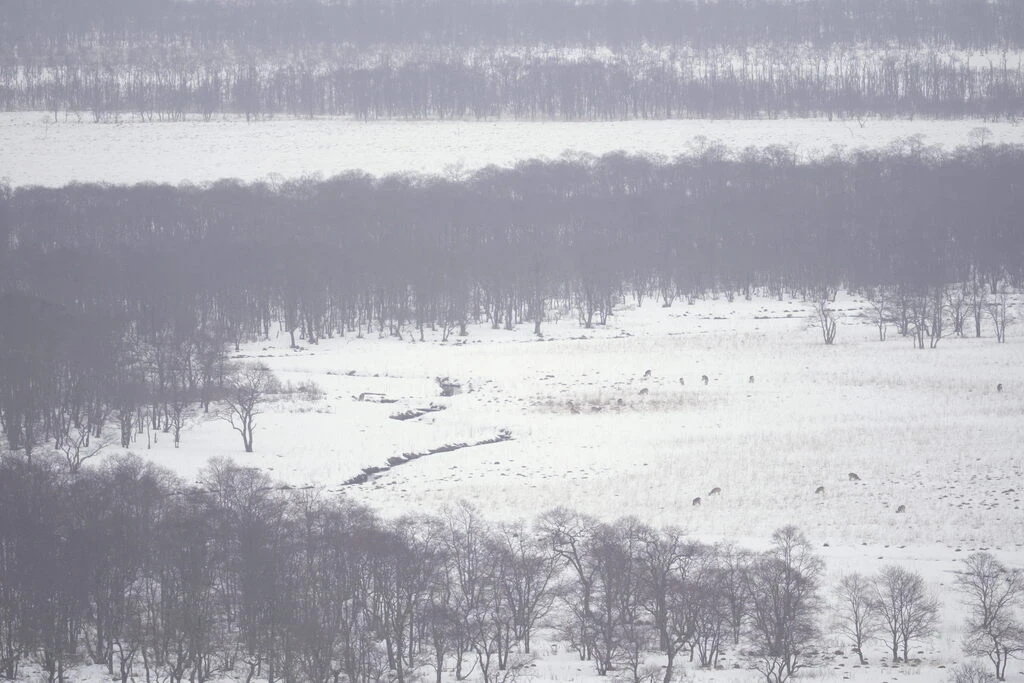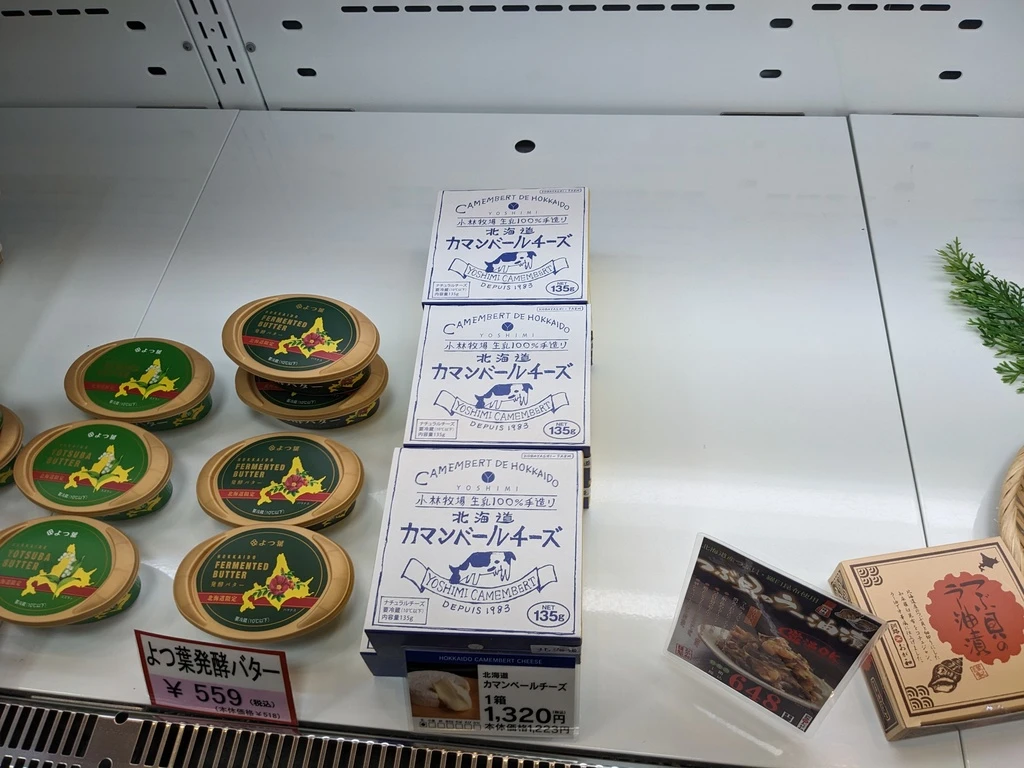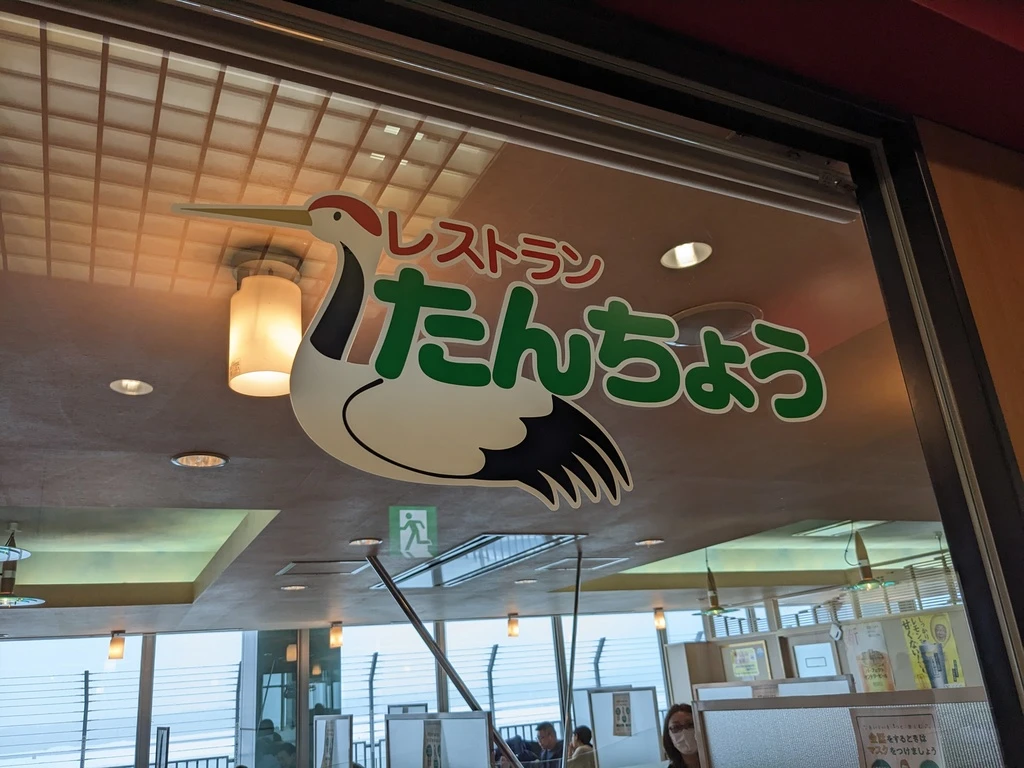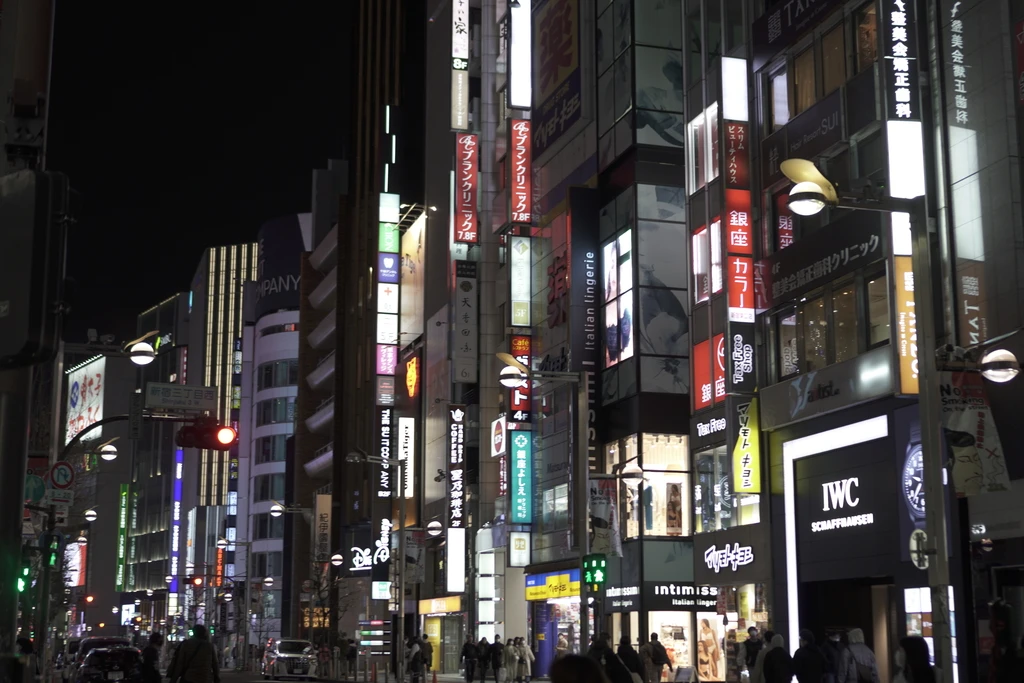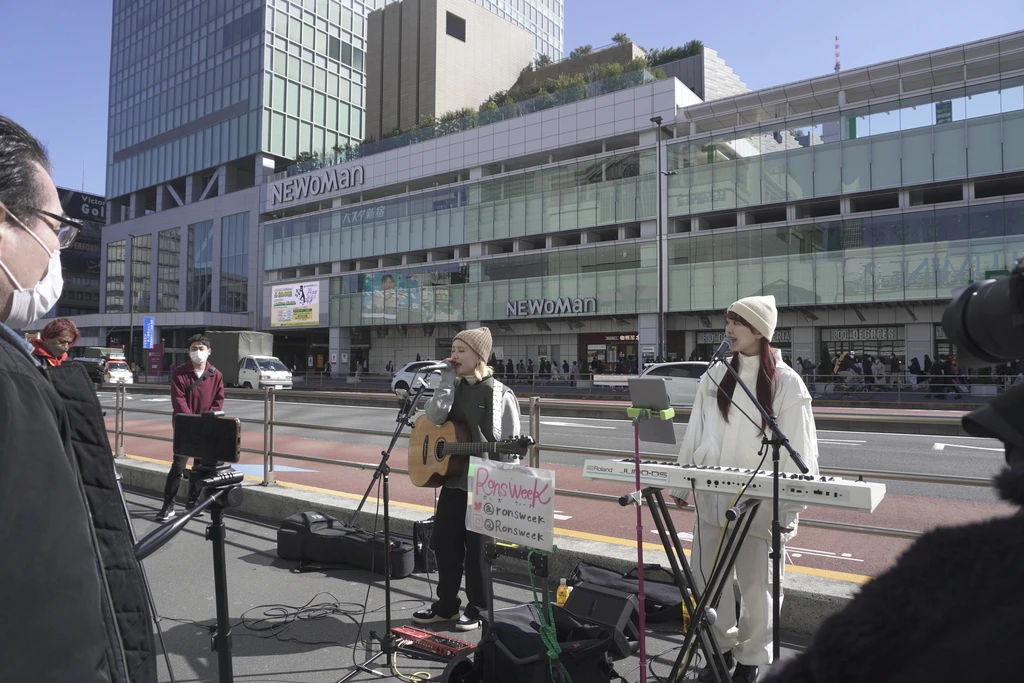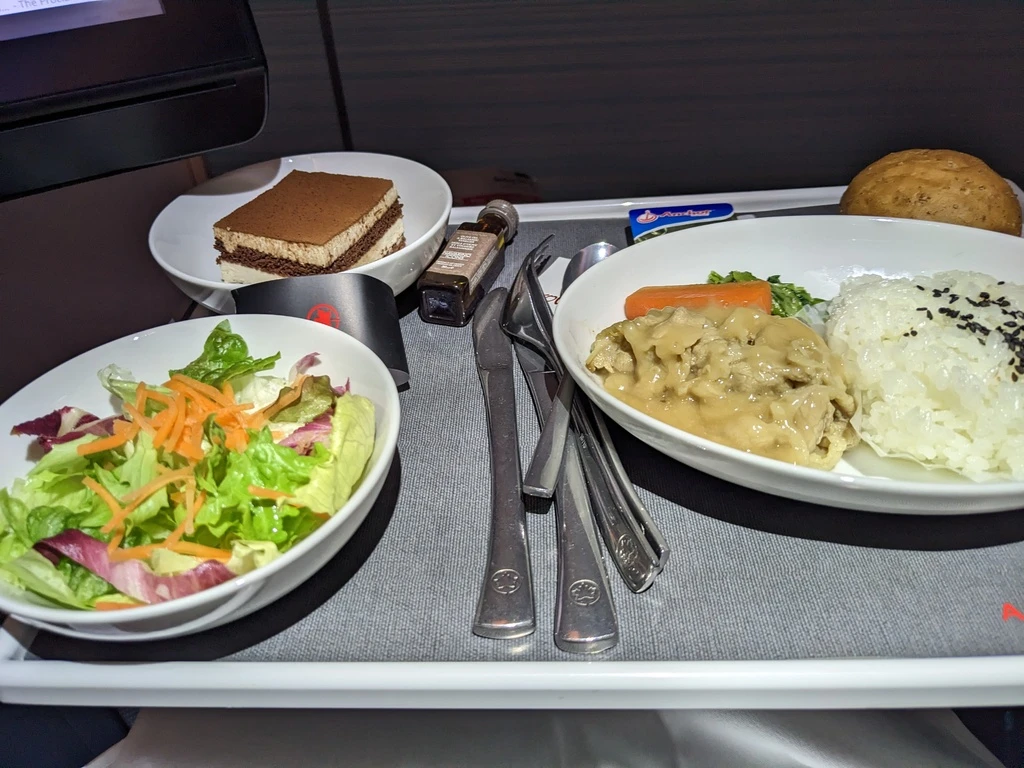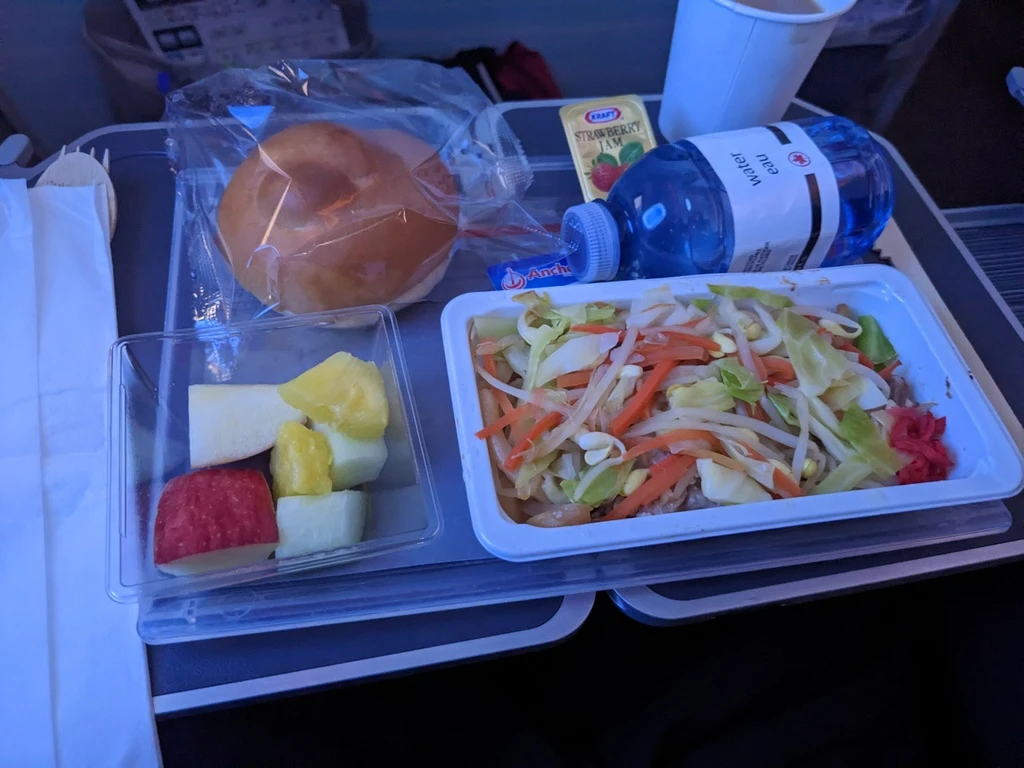The final segment of our trip, after the 11 hour train ride, was in Japan’s northernmost island, Hokkaido. (Japan also claims 4 of the Kuril islands, and the Ainu used to live there, but the Russians hold the island now.)
There used to be a 5-hour ferry covering the 160km from Wakkanai in Hokkaido (not Waikanae, New Zealand) to Korsakov in Sakhalin, but that doesn’t seem to run anymore.
Anyway, we planned to go skiing and hopefully see red-crowned cranes. Hokkaido is pretty remote and we planned the last day of our Japan Rail Pass to include a train from Sapporo to Kushiro, which is pretty far even in Hokkaido, but there are even more remote parts.
All the parts:
- Japan part I: cherry blossoms and part of the Nakasendo
- Japan part II: historical (looking) buildings in the Japan Alps
- Japan part III: two days in Hokkaido and one in Tokyo
Day 7: Sapporo, February 24
It’s not really the snow on the sidewalks that’s slippery. What’s most slippery is the icy crosswalks on the street.
Market and disappointing crab sushi
We got out of the hotel at 8:30 and walked 1.2km to the Nijo market. What we saw of the market was kind of small, basically one street with a bunch of stores (and “no photography” signs).
Sapporo is famous for crab sushi. At the market there were a lot of huge crabs for sale. I guess the storeowners are tired of tourists taking pictures of the crabs and not buying them. There were also a couple of restaurants with crab sushi and lines. We went to one with no lines. Turns out that ours was somewhat underwhelming, and cost us ¥7100 for breakfast for two.
Skiing
Next, we caught the local Limited Express train to the end of the line, Teine (16 minutes), and took the 10:20 bus to the Sapporo Teine ski area (22 minutes). On this Friday, the first bus left us behind, but there was a relief bus right afterwards. There are clearly not enough buses to meet demand, and the every-two-hours weekday schedule is somewhat lacking (plus 8:55/9:15/10:20, and hourly on weekends). Still, it does get to the ski hill.
Next up, we needed to store our stuff, get rental gear, and lift tickets. I should first mention that Sapporo Teine is almost two resorts, linked by a gondola: Olympia and Highland. The gondola gets you to the top of Olympia/bottom of Highland. We got off the bus at Olympia; it is the first stop, and the easier terrain is there. But, everyone else also went to Olympia.
It was a struggle to find a locker, but we did manage, by going downstairs, and splitting our gear among two smaller lockers. Neat feature: you can open a small door in the locker to access your stuff without ending the rental session.
Highland has the high-performance gear, so I should have gone there. Instead, I got crappy rear-entry boots and average skis, after a one-hour wait. Definitely not as good as my early-2000s Volkl 6* all-mountain skis (admittedly not much floatation on those). So, when I was skiing Kitakabe (“super expert”) 5×, I experienced an insufficient-DIN wipeout once. But there was definitely soft bumps on that steep run. (“Miseibi” = powder).
MP also enjoyed snowboarding. She tried skiing at first, but that didn’t work. It has been too long. She was able to maneuver around on the snowboard though.
It felt expensive to rent ski gear, but lift tickets were cheap compared to many places in North America. (Newfoundland is an exception; stay tuned!) We ended up paying (for 2) ¥9,200 for lift tickets and ¥16,200 for gear. Skiing is expensive.
Most people did not wear helmets. Certainly I did not want to lug a helmet around Japan.
| cost | description | |
|---|---|---|
| ¥4,600 | 4-hour lift ticket | |
| ¥1,000 | helmet | |
| ¥1,000 | single item hat/gloves/goggles | |
| ¥5,900 | ski set | |
| ¥7,100 | high-performance skis | |
| ¥7,300 | ski/snowboard free exchange |
Back to Sapporo
After a half day of skiing, it was time to take the bus back to Sapporo Teine. Once again, this bus was at capacity. The driver managed to get all of us onboard at Olympia. He left behind a family at the stop after. Sucks to be them.
Also, when we got to the train station, we learned that the commuter train (takes 10 minutes) was broken, and we had to take the bus (takes an hour). Actually we got onto the metro as soon as possible, but that didn’t save much time; it was more comfortable, though.
We got back to the Sapporo train station with 35 minutes to spare. Overall, getting to the ski hill by transit was doable but not the most convenient. Try that in North America though. (I know that it’s possible at Mt Seymour in North Vancouver.)
Onwards to Kushiro
Today’s ekiben was fried chicken (quite a bit), pastries, salmon, lemon cake, and mochi desserts. The wait for the fried chicken was a bit sketchy compared to the departure time of the train, but it all worked out, and the chicken was delicious (and does not go on top of sushi, unlike what people may think in New Zealand).
All ways of getting from Sapporo to Kushiro are pretty slow (on the Japanese scale) for travelling 301km. The train is 4.5 hours. Driving is about that too. One could fly, but that’s more expensive and you have to get to and from the airport. Anyway, we arrived at 10pm, and then our Japan Rail Pass expired.
The Comfort Hotel was just across the street. Can’t get much more convenient than that! Kushiro is pretty far out and also depopulating, so it was also just ¥8,820, or roughly half as expensive as Tokyo.
Day 8: Kushiro, February 25
I’ve had really epic hotel breakfasts in Asia.
Comfort Hotel Kushiro did not provide an epic hotel breakfast. It was very average, as they say in NZ. Here, you can see. The room was good though.
Kushiro cranes and snowshoeing tour
I’d arranged for guide Hirofumi-san to take us around Kushiro. He is working on providing adventure tourism opportunities around Kushiro.
Besides us, there was another (Japanese) client, who was then going to take a bus to Rausu, even more remote than Kushiro. And yet, the guy was not a birder. MP says the Japanese guy looked perpetually embarrassed, presumably about us and our gaijin ways.
Hirofumi-san was impressed that I was a fifth dan in judo.
Usually, MP does not like being part of groups or guided tours. In this case, it was a lot easier than renting a car. And transit was just infeasible for our schedules. A group of 3 is pretty small, anyhow.
The itinerary included famous red-crowned crane places Otowa Bridge and Tsurui-ito Tancho Sanctuary. Apparently they aren’t always there, but they sure were there when we were. Also we saw the raccoon dog and a couple of other birds: goosanders, goldeneyes, whooper swans, and crows.
We also had some light adventure: snowshoeing in the Kushiro Marsh observatory. It’s a walk in the woods with cookies and tea in the middle. Also we saw a white-tailed eagle. The snow wasn’t actually that deep and we could have bare-booted. Often one can.
We dropped off the Japanese guy at the bus station and then Hirofumi-san took us to Washou market. In terms of buying tourist crap, it’s kind of like a Japanese version of St. Jacob’s Market in Waterloo.
But also, it has katte don (“as you like”), which is far superior to anything at St. Jacob’s. You get rice and then you buy servings of sashimi to create your own chirashi sushi. Delicious!
Thoughts about Kushiro
Seems to me that Kushiro is a small and isolated Japanese city that is depopulating. We saw very little of it, but we did drive past the factories that were shrinking. I guess that, as with everywhere, it’s the big cities that are really growing, along with a selected set of smaller cities (for idiosyncratic reasons, e.g. Waterloo and universities).
KUH to HND
Kushiro KUH: another new-to-me airport. Too far to walk. Hirofumi-san dropped us off at the airport nominally 2 hours early, but actually 3h15 early because of a 1h flight delay. Flying on JAL, we didn’t have lounge access, but I also don’t think there were any lounges to have access to. There was an airport restaurant which we didn’t need, as well as a moderate level of airport shopping, maybe 3 or 4 stores.
The JAL flight was fine. Security was efficient. We got back to Haneda 1h48 later. I’d wanted to go seek refunds from Air Do in person but they were in a different terminal and that would have taken a long time to get to.
Tokyo
Haneda is much closer to central Tokyo than Narita! Still, Tokyo is a big city, and it took us 22 minutes by local train to get to Sengakuji station. This wasn’t really that far and so it was pretty cheap; our rail pass had expired. Then there was a confusing-to-us transfer at Sengakuji and a 37 minute subway ride on the Mita line to get to Akebonobashi.
Our room at the Pearl Hotel Shinjuku Akebonobashi was fine, but it did cost ¥15,121 (vs ¥8,820 in Kushiro). Clearly more people want to stay in Tokyo. We checked in and then grabbed some dinner at Coco Curry, a chain with good crab croquette curry and also good air circulation.
Sapporo is supposed to be wintery and cold. Tokyo was not snowy but it was still quite cold on our walk to Golden Gai. There are lots of nightclubs. I had no interest in going to nightclubs. So we walked around and took some pictures (trying the prime 35mm APS-C f/2) and took the subway back to Akebonobashi, which still was a small neighbourhood with stuff in a big city.
Day 9: Tokyo and out, February 26
Our last day in Japan. We had flights out at around 6pm, so we would have the better part of a day in Tokyo.
I arranged to meet up with SE alum Rew, who came in to Shinjuku for the day from the suburbs (around Kawasaki, if I remember, not so far from where we had gone to the cherry blossoms). With expired SIM cards, the rendezvous was somewhat tricky, but we eventually managed.
The first order of business was ramen at Soushi Menya Musashi: rich pork-belly ramen and dipping noodles. We were close to first in line at their opening time of 11, which is good, since the line got long.
Then we walked around Shinjuku, visiting the Hanazono Shrine and Antique Market, also next to the Shrine Raden. There were a few cherry blossoms, though not peak and not a huge number.
Rons week was playing on the bridge above the train tracks. They don’t seem particularly famous but there were a bunch of people with fancy cameras recording them. Dunno?
I got some hardware (phone stand and USB memory stick) at Don Quijote, which has a wide variety of stuff. The phone stand is OK, I guess. It’s hard to get a phone stand that really ticks all the boxes. This one doesn’t quite keep the position well enough.
We did not enter the Shinjuku Gyoen National Garden with a ¥500 entry fee, though I’m sure it was well tended. Crossing the street to get to the entrance was pretty hard, though it wasn’t quite a car sewer in the way that Hespeler Rd in Cambridge or Blvd Taschereau in Brossard are.
Got a replacement tuque at Mont Bell, replacing the one I’d lost. There weren’t many tuques. Back home, I’d order another one on the Internet.
To the airport
We left for Narita at 1438, taking the Narita Express; not going to miss the plane this time! We arrived at the airport at 1600. Unfortunately there is no longer Star Alliance lounge access for guests on different flights, but we got some sushi and bought a bunch of omiyage (KitKat, cookies) for friends, family, and students.
MP’s flight was delayed, but I still had a bit of time in the lounge. I saw quite good air quality and snarfed some food.
Then, I boarded my NRT-YYZ Air Canada flight. I sat in my economy seat 19A and then the gate agent came and said something like “Sorry for the inconvenience. We have a new seat for you, 12A” (which was in PY). “Thanks, I really appreciate that.” The flight attendant asked “why are you going that way?” “Because the gate agent gave me a new seat.” Better yet, 12B was empty. I guess that the operational upgrade was due to two no-shows (or cancels) and Y being overbooked. Overbooking for the win!
I quite enjoyed my flight to Toronto, landed just in time to take the flixbus (which was 5 minutes late), then took an Uber home from the bus stop. I forgot where I’d put my keys, oops. Had to rummage through all my bags to find my keys. But, I had also had enough time to write Part 1 of this trip report enroute, and posted it once back home. All ready for teaching the next morning at 11:30.









